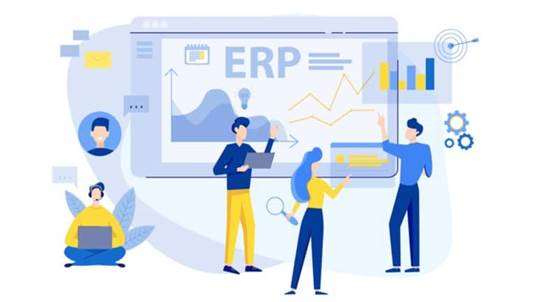Within either method, certain practices can reduce risk and increase the chances of success. The Manifesto addresses key problems with Waterfall that led to challenges in software delivery. Where Waterfall tends to be a “one-way road,” Agile is a more flexible framework that allows for uncertainty.
While this creates upfront work, it really is the best way to take a step back and find ways to improve and optimize your approach. These improvements will save you a ton of time, effort, and money in the long run. This final SDLC phase is where there tends to be the most variability. Some developers don’t feel that maintenance should be seen as a phase in the SDLC process, but rather something that is ongoing.
Systems development life cycle
Start building your development around a strict Software Development Life Cycle and stay a step ahead of competitors still relying on an old-school approach to product design. While every SDLC is unique, all life cycles go through similar steps. Let’s take a close look at every typical phase of an average software development life cycle. SDLC strategies have been around since the 1960s, and most of its core concepts have evolved over time. Following each phase of a system development life cycle the team and project manager may establish a baseline or milestones in the process.

This comprehensive cost estimation at all stages results in a compounding action that helps the team achieve the goal within the budget. All software begins as a concept, and progresses through a series of phases until a release is developed and deployed. The Software Development Life Cycle of an application or system continues, with updates and new features, until the day it is decommissioned or replaced. The importance of a central source control repository can’t be overstated.
Get the latest news, tips, and guides on software development.
The abbreviation SDLC can sometimes refer to the systems development lifecycle, the process for planning and creating an IT system. The system typically consists of several hardware and software components that work together to perform complex functions. The term software development lifecycle (SDLC) is frequently used in technology to refer to the entire process of technology innovation and support. Having separate build and production environments ensures that customers can continue to use the software even while it is being changed or upgraded.
All development begins the same way; software, like all products, starts as an idea. The idea becomes a document and maybe a prototype and will exist in a few forms before getting into the hands of an actual user. Agile, much like SDLC, is a term that has been transformed and manipulated to the point where nearly everyone defines it differently. It sdlc steps all started with the Agile manifesto, which laid out principles for effective software development. These include being flexible and responding to change over following a plan, and collaborating with stakeholders and customers. Your process at this stage will depend heavily on whether you have a dedicated QA team or other built-in testing systems.
What is the software development life cycle (SDLC)?
Developers take inputs from this document to derive the software architecture, which is like a skeleton of the software on which everything is built in the next stage. At this phase, you can plan the software infrastructure, user interface, and system architecture to ensure all the functional and non-functional are covered. It will help you build each software component without having to undergo costly rewrites. The reason why it’s essential to learn about SDLC and implement it carefully is that software development is an extensive process involving many steps and complexities. Implementing an effective Software development life cycle (SDLC) helps you produce high-quality software solutions quickly and under budget.
The deployment phase includes several tasks to move the latest build copy to the production environment, such as packaging, environment configuration, and installation. In the design phase, software engineers analyze requirements and identify the best solutions to create the software. For example, they may consider integrating pre-existing modules, make technology choices, and identify development tools. They will look at how to best integrate the new software into any existing IT infrastructure the organization may have.
Other types of Testing
This type of scenario meant that there was not a true need for refined methodologies to drive the life cycle of system development. However, technology has evolved, systems have become increasingly complex, and users have become accustomed to well-functioning technology. Models and frameworks have been developed to guide companies through an organized system development life cycle. Today, the traditional approaches to technology system development have been adjusted to meet the ever-changing, complex needs of each unique organization and their users. Below you will find sequential steps to SDLC, but each company will vary in their process.
- Once an SDD has been created and a design
agreed upon, the project enters the next phase of the SDLC. - Other less common SDLC phases that are still worth knowing are dedicated steps for deconstructing apps, retiring software, and writing documentation.
- In this phase, Developer needs to follow certain predefined coding guidelines.
- You’ll get a response within one business day from Edvantis expert skilled in your tech stack, industry, or specific business challenge.
- While there are multiple SDLC models (waterfall, agile, iterative, etc.), many companies have, or are transitioning to, a DevOps model.
Here, at this most foundational level, you would figure out what the requirements of workers are when it comes to tracking hours and labor. SDLC consists of six steps which I have diagrammed here for your reference. One particularly powerful and popular framework is called the Software Development Life Cycle process (SDLC). “Let’s get this closer to what we want.” The plan almost never turns out perfect when it meets reality. Further, as conditions in the real world change, we need to update and advance the software to match. In other words, the team should determine the feasibility of the project and how they can implement the project successfully with the lowest risk in mind.
How does the SDLC work?
The Software Development Life Cycle (SDLC) refers to the process we follow to deliver software to customers. It captures each step of creating software, from ideation to delivery, and eventually to maintenance. In project management, fast tracking involves stacking tasks so they happen in parallel rather than sequentially. This is almost like putting together the architectural plans and interior design of a new house before you build it. Except your architects and designers are your ux/ui team and developers.

Business analyst and Project organizer set up a meeting with the client to gather all the data like what the customer wants to build, who will be the end user, what is the objective of the product. Before creating a product, a core understanding or knowledge of the product is very necessary. The spiral model is one of the most crucial SDLC models that provides support for risk handling.
What Is Fast Tracking in Project Management?
However, repeated cycles could lead to scope change and underestimation of resources. To manage and control a substantial SDLC initiative, a work breakdown structure (WBS) captures and schedules the work. The final phase of the SDLC is to measure the effectiveness of the system and evaluate potential enhancements. For example, as the system analyst of Viti Bank, you have been tasked to examine the current information system. Customers in remote rural areas are finding difficulty to access the bank services.
